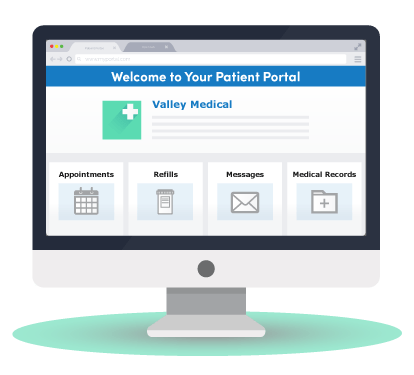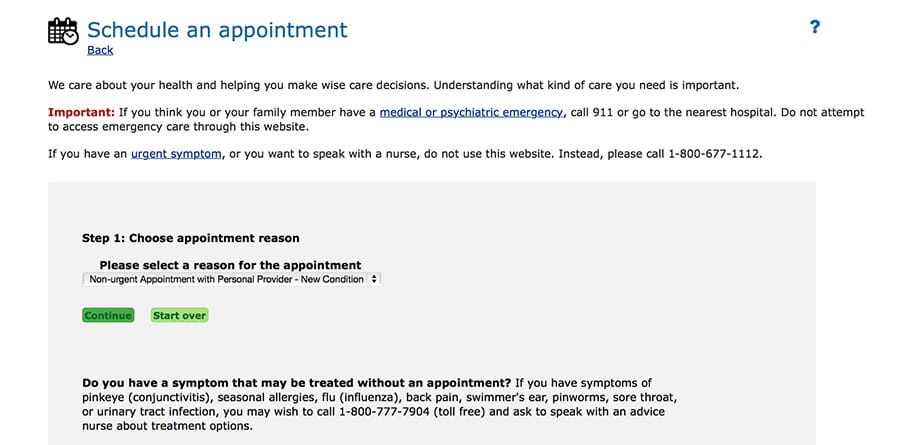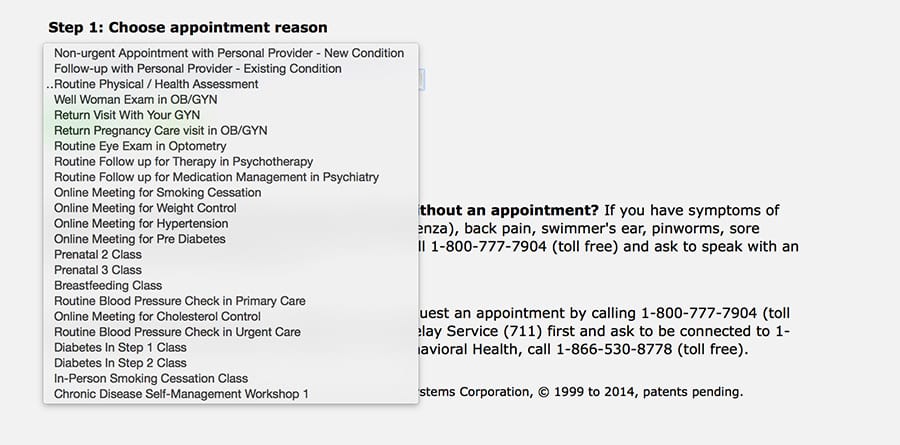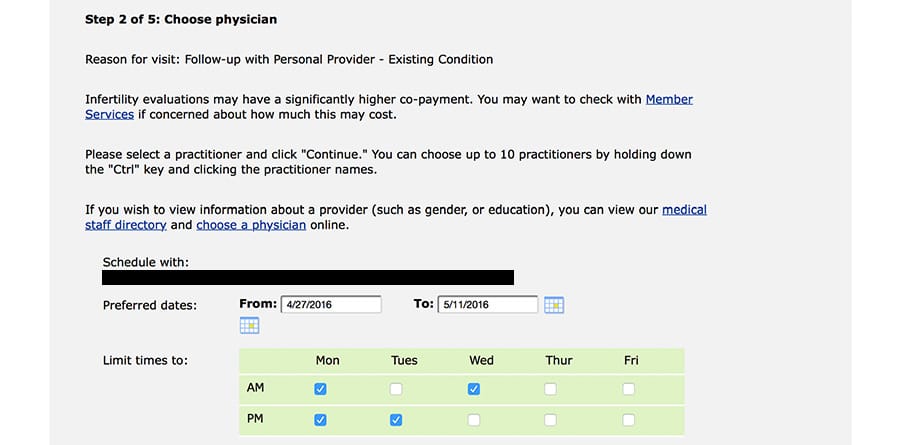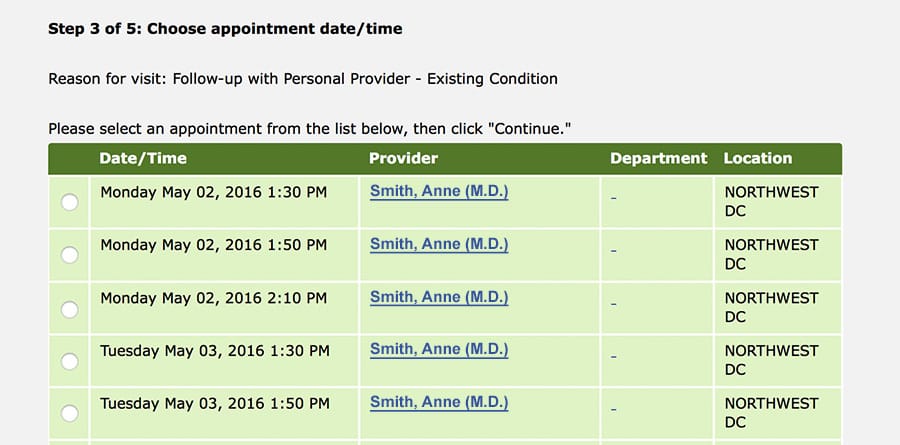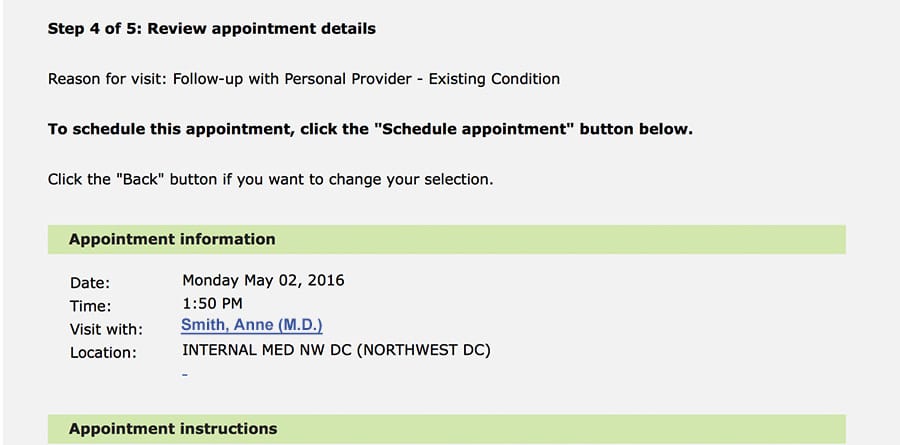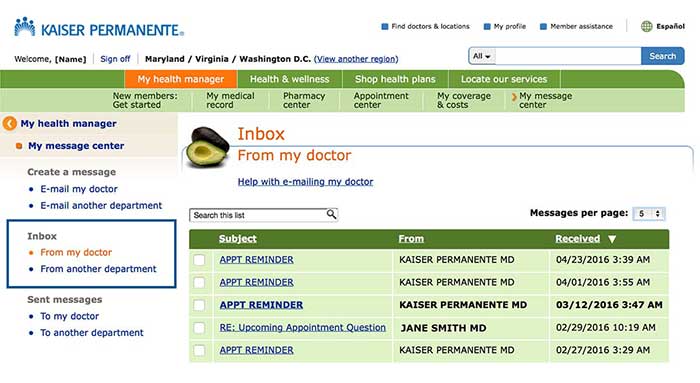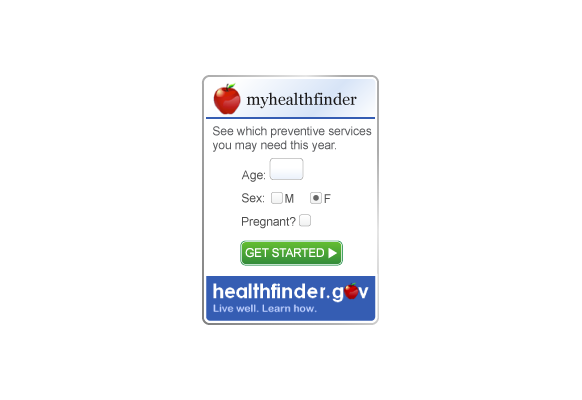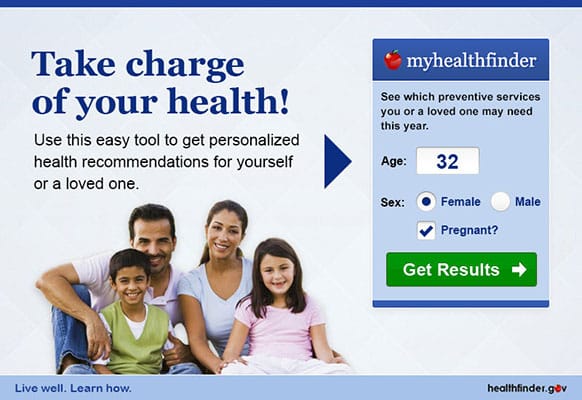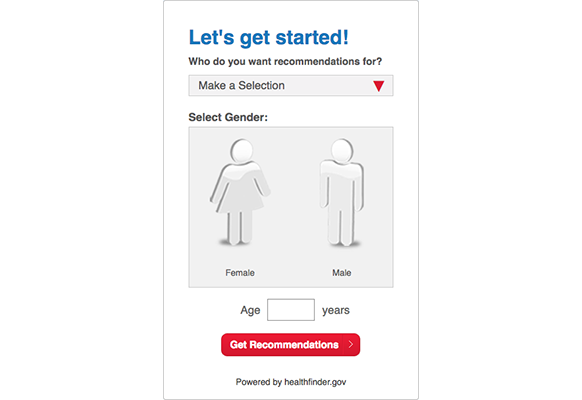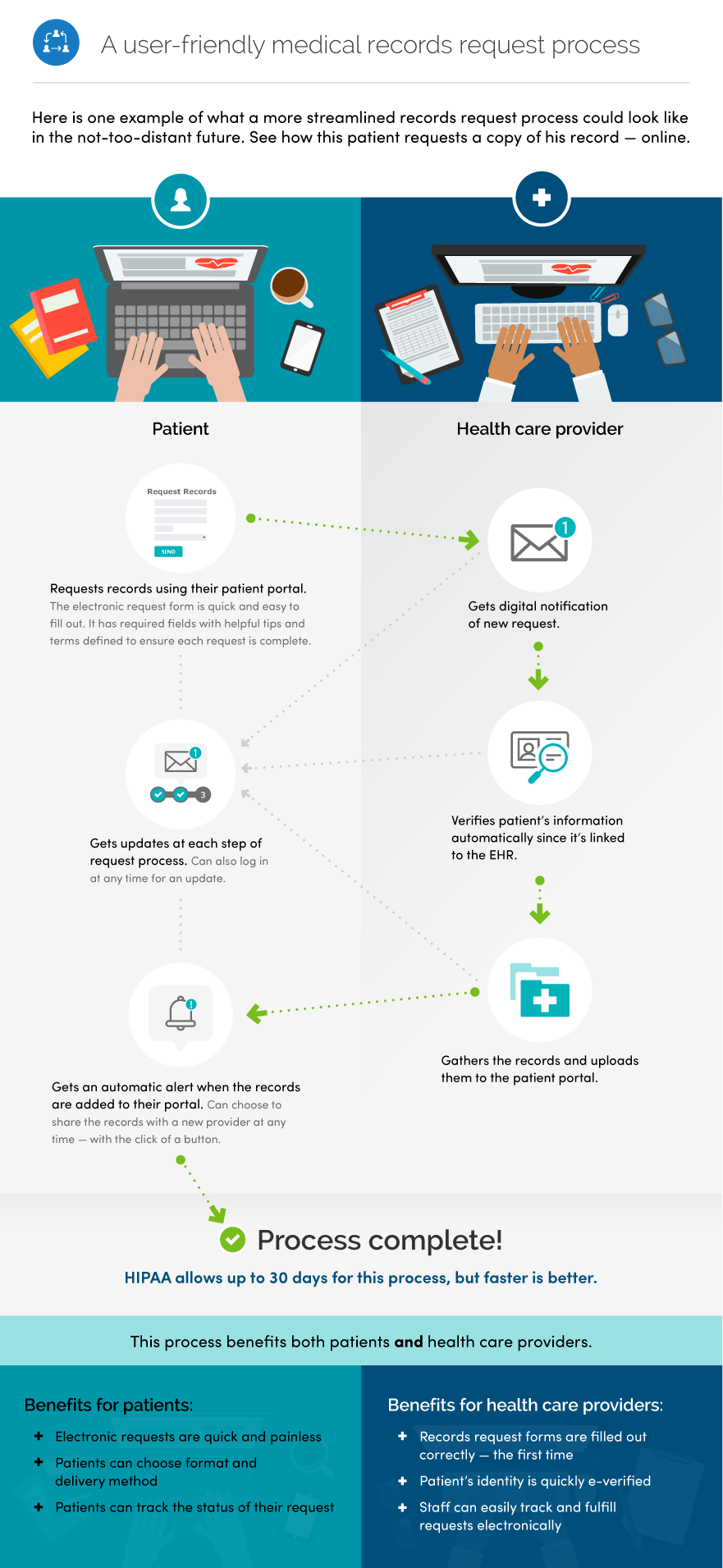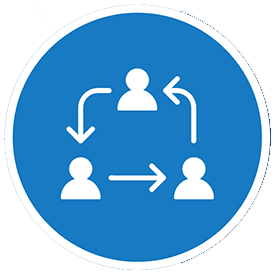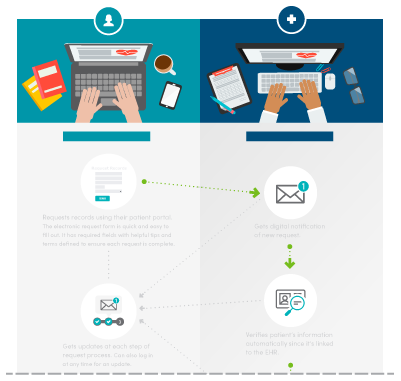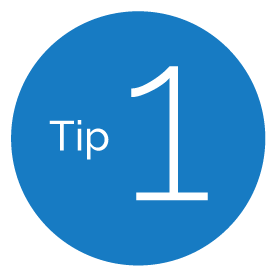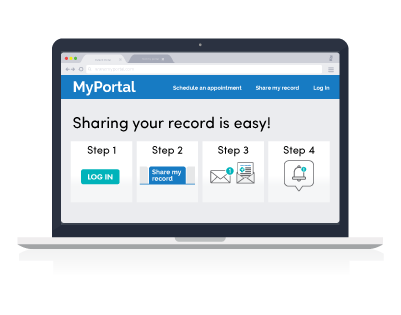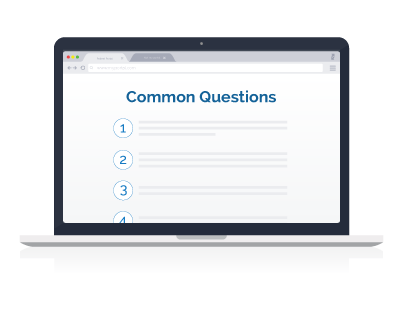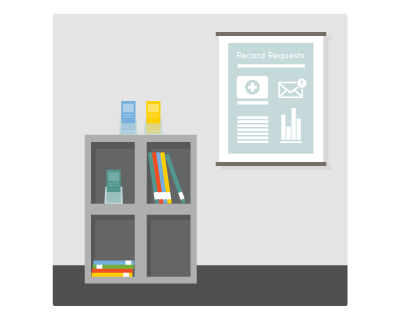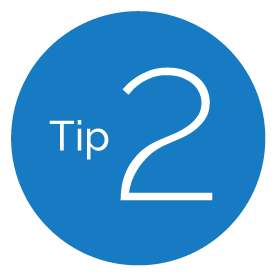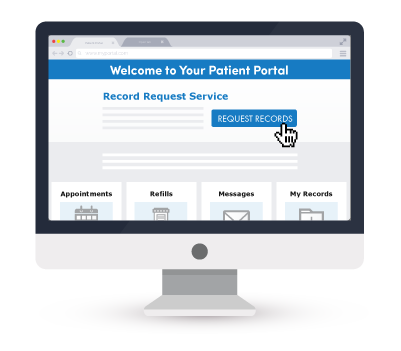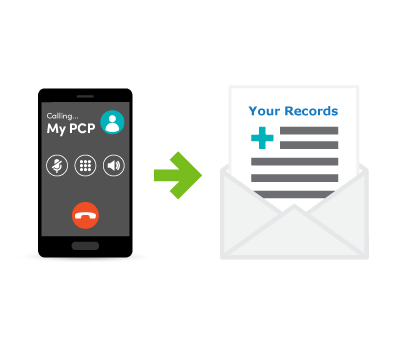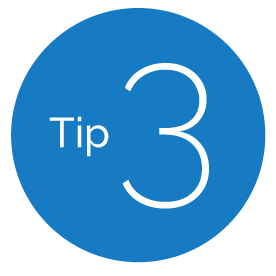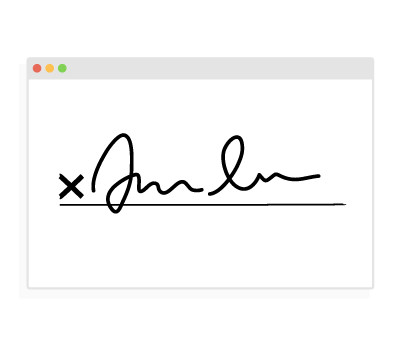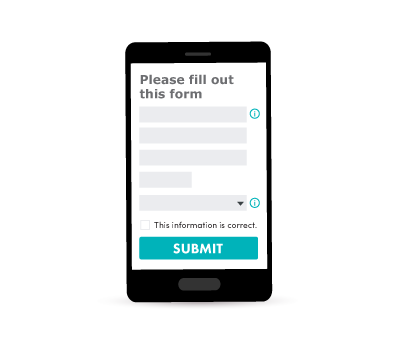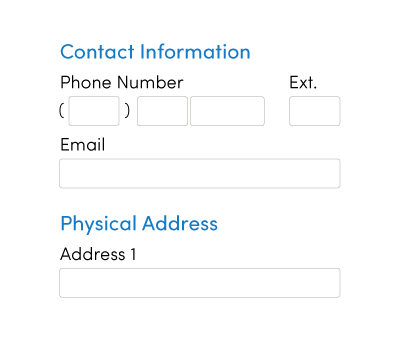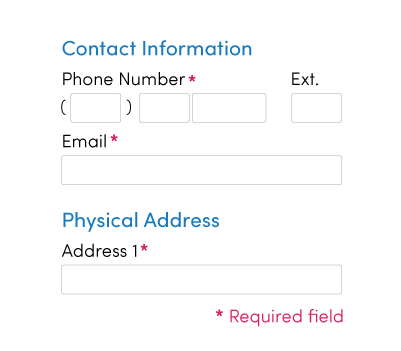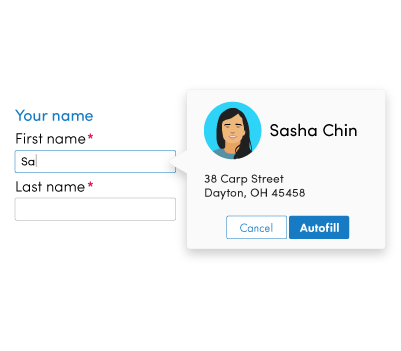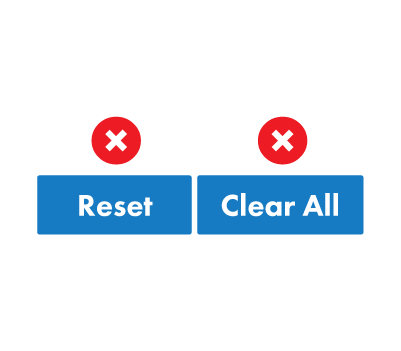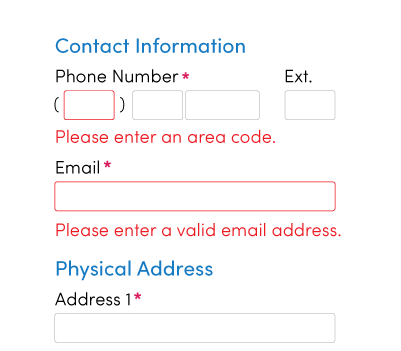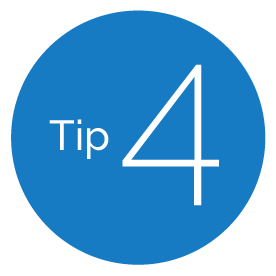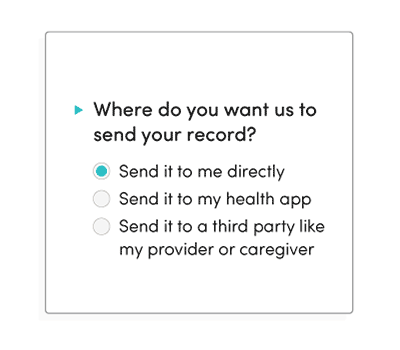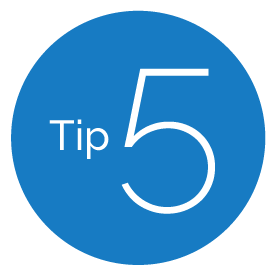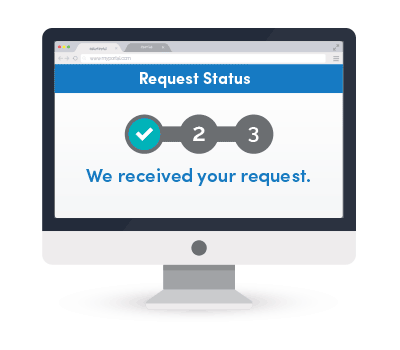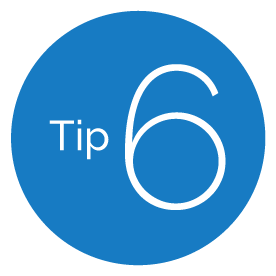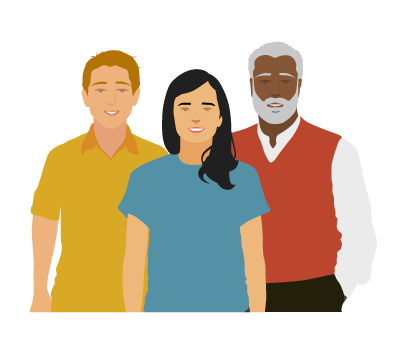Chapter 2
Activate portal features that meet patient needs
In this chapter
Learn how to:
- Save time for patients and staff by enabling online booking and prescription refills
- Set up secure messaging to streamline patient-clinician communication
- Share notes to help patients understand and act on their clinician's advice
- Add value to the portal by including educational and community resources
- Create a user-friendly electronic records request process
Patient portals have the potential to streamline clinician workflow and improve patient engagement.
But at first, clinicians may be overwhelmed by the number of features that portals offer or fear that using the portal will be cumbersome and ineffective.
You can take small steps to overcome these barriers and get the most out of your patient portal. Although patient portals vary from vendor to vendor, most include a basic set of features that offer value to patients. These features can improve the way clinicians and patients:
- Handle administrative tasks, like booking appointments
- Communicate with each other
- Manage care
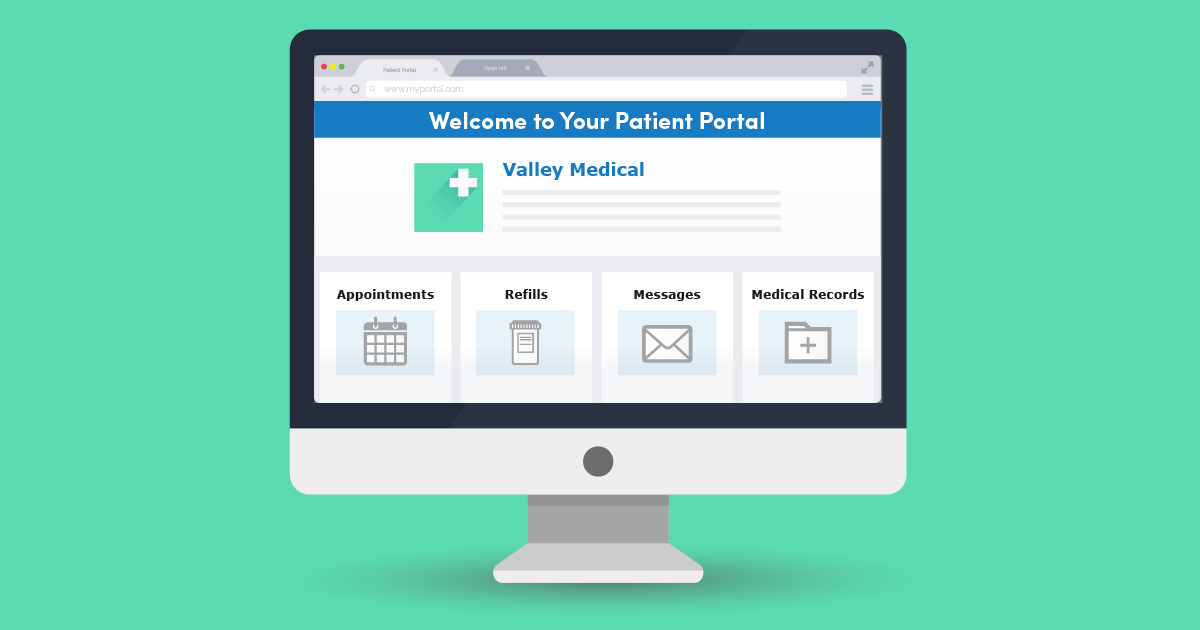
Use these features to engage your patients in their care and make care coordination and communication more convenient, efficient, and effective — for them and for you.
Keep in mind that other features may also be available — but make sure you’ve determined their value before adding them. If you clog the portal with unnecessary information and tools, patients may get overwhelmed and find the portal more difficult to navigate and use.
2.1 Enable online booking and prescription refills
Booking medical appointments and refilling prescriptions over the phone can be time-consuming for both patients and clinicians. On average, it takes a little more than 8 minutes to make an appointment over the phone. 19
In 2017, over half of non-federal acute care hospitals reported that they allow patients to schedule appointments and refill prescriptions through their portal. 20 Allowing patients to book medical appointments and refill prescriptions online will free up staff to support your practice in more valuable ways. 21 And research shows that patients use these features — in 2017, 39% of people with access to a portal used it to make appointments and 37% requested medication refills. 22
Kaiser Permanente | From the field
Kaiser tells patients upfront when they can expect to get an appointment if they book online. 23
Through the portal, Kaiser also gives patients clear instructions for:
- Filling a prescription for the first time
- Refilling prescriptions online
- Transferring prescriptions from another health system
- Checking which medications are covered by their plan
- Reading up on medication instructions and side effects 24
2.2 Set up secure messaging
Between 2015 and 2017, the number of non-federal acute care hospitals that offered secure messaging through their patient portal increased by nearly 10%.25 By setting up secure messaging, your practice will take a big step toward achieving a Meaningful Use objective: “Use secure electronic messaging to communicate with patients on relevant health information.” 26
There are many scenarios in which patients and clinicians need to communicate between visits. Patients may have follow-up questions about a clinician’s guidance or a medication. 27 Clinicians may need to share test results or explain a recommendation in more detail.
Myth
Clinicians worry that activating email in the patient portal will lead to an email deluge that burdens their practice and impedes efficiency.
Reality
When practices integrate email into their workflow, clinicians often find communicating with patients more convenient and less time-consuming.
Using the portal, patients and clinicians can:
- Share brief messages and updates
- Clarify issues and advice
- Correct misunderstandings before they become significant problems
- Record details, like a referral name or post-operative instructions
- Link to educational materials and other online resources 28
Patient portals offer an opportunity to improve and streamline patient-clinician communication and practice workflow. The portal’s secure email can reduce the need for face-to-face visits and phone calls by giving patients and clinicians a quick, convenient way to exchange information.
With secure email through the portal, your practice can:
- Avoid telephone tag, which can lead to both miscommunication and communication delays
- Address routine health issues more efficiently, so you can dedicate more time to patients who need in-person care
- Have support staff to triage messages, so that clinicians only need to weigh in as necessary 29
- Share lab results — a best practice identified by some EHRs, like athenahealth — or other post-visit follow-up with patients
To maximize efficiency, practices must integrate reading and responding to email into their workflow. For example, assign a staff member to acknowledge all patient messages within 1 business day. Clinicians can then respond to the patient’s question or issue at their convenience. 30
Tips for Practice Administrators 31
If your practice uses the portal’s email feature, consider establishing policies that address:
- Turnaround time for responding to patient emails. Don’t use email for urgent issues.
- The types of communication allowed over email. Decide which requests (like prescription refills and appointment scheduling) clinicians will fulfill and which sensitive topics (like HIV and mental health) they’ll discuss.
Check out ONC’s Fact Sheet: Using Secure Electronic Messaging to Support Patient and Family Engagement.
Tips for Clinicians
Follow these guidelines for communicating with patients by email. 32
Address privacy issues
- Let patients know which other clinicians or practice staff may read and respond to their emails — for example, outside usual business hours or when you’re on vacation. Include this privacy disclaimer in each patient’s medical record.
- Keep a mailing list of patients, but only send group emails using the blind copy feature. Never send group emails where patients can see each other’s names.
Give patients clear guidance
Make sure to explain the policies and procedures for using portal email, like typical response time and types of communication allowed over email (see Tips for Practice Administrators above).
Also, ask patients to:
- Write a subject line that describes the nature of their email, like “Billing question” or “Medical advice”
- Call 911 or your office about urgent issues
For more information and guidance, check out ONC’s Fact Sheet: Using Secure Electronic Messaging to Support Patient and Family Engagement. 33
Kaiser Permanente | From the field
In 2014, Kaiser members used the portal to:
Lab test results and secure patient-clinician email became widely available to Kaiser Permanente members in 2006. Over the next year, the numbers of lab results viewed online and email messages sent to clinicians grew steadily. Between 2006 and 2007, lab test results viewed online increased 157% and email messages to clinicians increased 152%. Viewing test results soon became the most-used portal feature. 34
Kaiser members primarily emailed their clinicians to discuss:
- A change in health condition
- Lab results
- New condition
- Prescription dose
- The need for a new prescription
These emails can prompt necessary care that may have otherwise been overlooked. Six out of 10 patient-initiated emails led to new clinical assessments or decisions, and 1 in 4 required clinical action (like a lab test). 35
Primary Health Medical Group 36 | From the field
Primary Health Medical Group clinicians can send lab results to patients using secure messaging. Clinicians can include a brief message explaining the results (for example, “Your results are normal”) and any needed follow‐up instructions (for example, “Come back in 3 months for a recheck”). For serious lab results, clinicians use the phone to discuss results with the patient. Clinicians encourage patients to review their medical information and report inaccuracies.
2.3 Share notes
Patients immediately forget up to 80% of the clinical information they receive during a visit. 37 Clinician notes can give patients a snapshot of a visit so they can better remember, understand, and act on their clinician’s advice after the visit has ended. Patients have always had a right to see these notes — but until recently there hasn’t been a simple, straightforward way to access them. 38
By offering patients access to notes through a portal, you can promote transparency and change the way people engage with their health and care. 39 Since patients are the best source of information about their health, they can also act as a second pair of eyes on the record. With patients checking for accuracy, clinicians can improve the quality of a medical record and make more informed clinical decisions. 40
Tips for Clinicians
When sharing notes with patients, it’s important to:
- Explain to patients what they can expect to see in the notes
- Use plain language instead of medical jargon or abbreviations
- Soften language and add context, when necessary (for example, instead of labeling a patient as “obese,” include their BMI and link to patient education about BMI)
- Keep notes focused on specific issues
- Discuss lab or study results, if applicable
- Reference educational materials, whenever possible 41
An Evaluation of OpenNotes 42 | From the field
A study across 3 sites — Beth Israel Deaconess Medical Center (BIDMC) in Massachusetts, Geisinger Health System (GHS) in Pennsylvania, and Harborview Medical Center (HMC) in Washington — found that most clinicians had positive or neutral experiences with OpenNotes (a national initiative that promotes sharing notes with patients 43 ). When asked about the most difficult aspect of OpenNotes, 3 out of 4 clinicians commented that nothing was difficult and that they experienced no changes in their practice. Several doctors acknowledged fears about an additional time burden and offending or worrying patients — but said that these concerns didn’t materialize.
The majority of patients who participated in the study used OpenNotes. Out of roughly 13,500 patients with access to clinician notes, more than 11,000 had opened at least 1 note.
Myth
Clinicians fear that patients may misinterpret or misunderstand their notes — causing more worry for patients and more work for clinicians.
Reality
For most clinicians, sharing notes doesn’t affect their workload — and using OpenNotes improves patients’ engagement and sense of ownership over their care.
Patients across all health systems reported experiencing benefits from seeing notes. Specifically:
77% to 87% across the 3 sites reported that OpenNotes helped them feel more in control of their care.
60% to 78% of those taking medications reported increased medication adherence.
20% to 42% reported sharing notes with others.
“Making visit notes available online is a good idea.”
— 85% to 88% of clinicians in the study agreed
Adopting OpenNotes: Partnering with Patients
OpenNotes isn’t software or a product — it’s an approach to giving patients access to notes from their health care visits. OpenNotes can benefit health care practices and patients by increasing transparency and patient engagement. Complete this module to learn 6 steps for adopting OpenNotes in your practice.
Go to the AMA STEPS Forward™ Adopting OpenNotes: Partnering with Patients module.
OpenNotes at Kaiser Permanente 44 | From the field
Kaiser has found that most patients with access to visit notes read them, and many discuss them with clinicians or loved ones. The majority of Kaiser patients who used OpenNotes reported improved self-care:
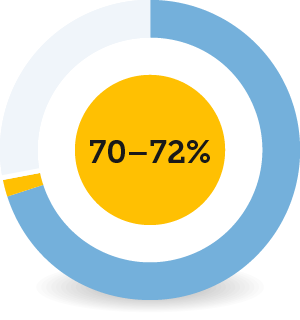
70–72% of patients reported taking better care of themselves.
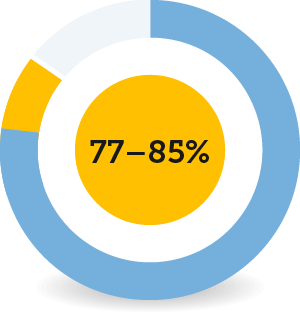
77–85% reported better understanding of their health and medical conditions.
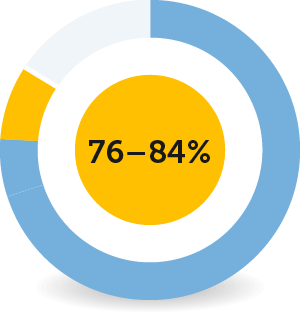
76–84% reported remembering to plan for their care better.
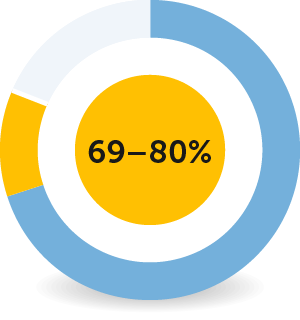
69–80% felt better prepared for visits.
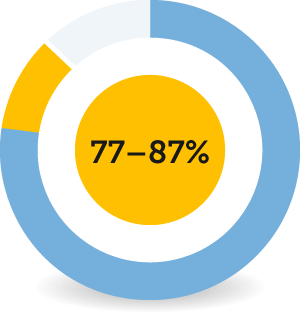
77–87% felt more in control of their care.
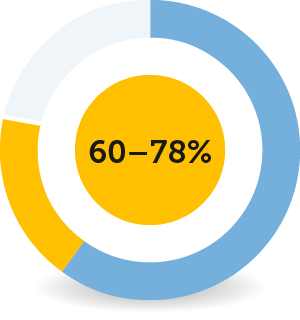
60–78% of patients taking medications reported improvements in taking medications as prescribed.
This increased patient involvement in health and medical care can lead to more efficient care, better patient-clinician communication and, ultimately, healthier outcomes.
Access to OpenNotes is important to the majority of Kaiser members: Roughly 6 of 10 members who logged onto KP.org after a recent visit said that OpenNotes would be a “very important” factor in future health plan decisions. About 4 of 10 who hadn’t logged on said the same.
“Reviewing the notes I SEE why I need to lose weight…It feels like my [d]octor really cares about my health, I never knew that.”
— Patient in study
2.4 Connect your patients to educational and community resources
Research shows that adding educational resources to patient portals can make them more useful and effective 45 — and help you increase patient engagement. Portals and electronic health records can also help your staff provide tailored information and community resources to patients who may benefit from them.
Try this tool!
Add the myhealthfinder tool to your portal or website.
When choosing educational resources to add your patient portal, it’s important to select trusted sources. For example, healthfinder.gov offers actionable, evidence-based, plain language health and wellness information, as well as free interactive tools like myhealthfinder, which provides personalized preventive health care services recommendations.
Because healthfinder.gov manages the content, you can add the tool to a portal or website without having to worry about keeping the information relevant and up-to-date.
You can also use your EHR to track social determinants of health: the social, economic, and environmental conditions that can affect health and health outcomes. Including this information in your EHR can help your staff identify and address factors that may contribute to health complications, such as unsafe housing or lack of access to safe opportunities for physical activity.
See the PRAPARE Implementation and Action Toolkit for resources on how to set up your EHR to gather data on social determinants of health, and how to assess and respond to that data once it’s collected.
CommunityRx | From the field
To address key social determinants of health on Chicago’s South Side — like food access, employment, and social support — CommunityRx developed a real-time automated system called HealtheRx. The system connects patients to community-based services and resources that can help them stay healthy and manage chronic conditions.
HealtheRx is embedded in EHR systems and seamlessly integrates with clinic workflow, matching patient health information with relevant wellness programs and services located near their home. Patients can also talk to dedicated Information Specialists to get help navigating and understanding the resources available to them.
2.5 Support electronic records requests
More and more patient health information is available electronically — but patients and caregivers still face challenges in accessing, using, and sharing their data. Patient portals may not include all the information patients need — and what's there may be inaccurate or incomplete. And often, health data can’t be requested or shared electronically, or transferred to other health care clinicians without a cumbersome, multi-step request process.
To learn more about the challenges patients face in the records request process, check out ONC’s report Improving the Health Records Request Process for Patients: Insights from User Experience Research [PDF - 2.6 MB]. The report includes personas and journey maps illustrating these challenges, as well as tips on creating a better records request process.
We know that patients and caregivers who do have access to their data can better coordinate their health care, prevent repeat or unnecessary tests and procedures, and have greater control over their health and well-being.
That’s why ONC is committed to addressing large-scale access and portability issues — to help in creating a medical records request process that works for everyone.
There’s a lot that health care practices can do today to improve the records request process and reduce the burden on consumers, clinicians, and care teams. Integrating records requests into your patient portal is a win-win — it increases patient satisfaction, saves time, and reduces hassle for clinicians, administrators, and other practice staff.
Novant Health | From the field
Novant Health, a network of clinics and hospitals headquartered in North Carolina, makes it easy for patients to request health records electronically. The Novant Health website offers clear instructions for submitting a medical records request, including answers to frequently asked questions about the process.
Novant Health patients can request medical records:
- By fax
- By email
- Via their patient portal
Allowing patients to submit a record request electronically is a great way to increase patient access. With both email and patient portal submission as options, patients can submit their request at a time that’s convenient for them — instead of having to locate a fax machine or hand-deliver a request form during office hours.
Using the patient portal as a tool to access medical records also enables patients to request and view their health data on their own time. The portal verifies patients’ identity through the login, and the electronic request form is easy to fill out and secure to submit.
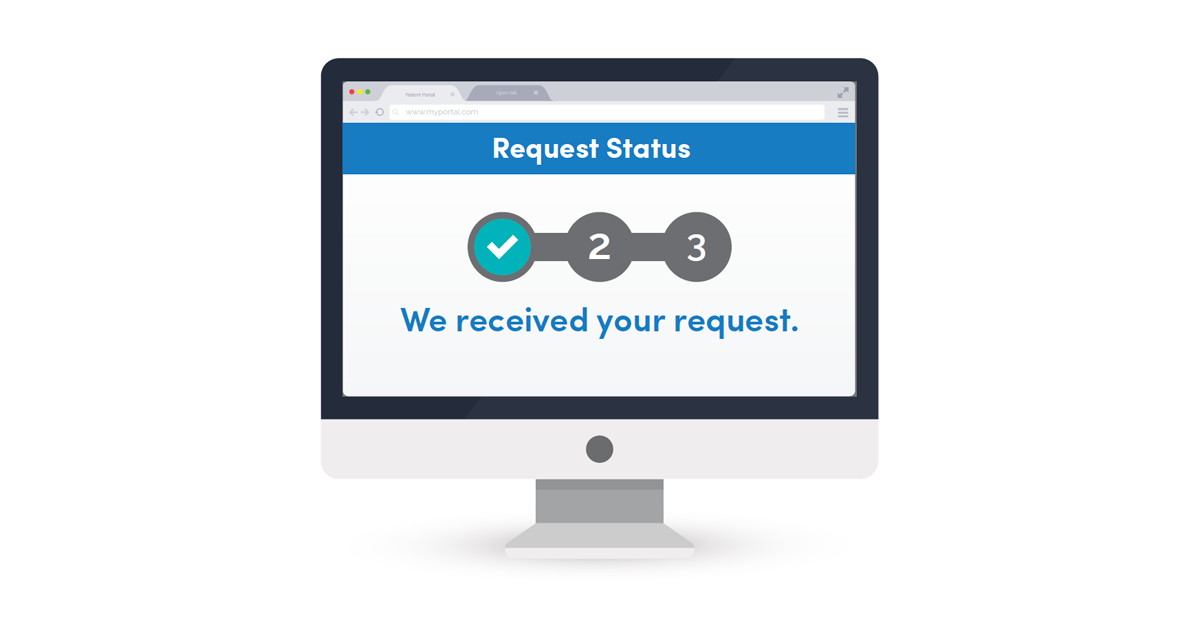
Chapter 2 Recap
Take advantage of patient portal features to improve communication and create value for patients and clinicians.
- Allow online booking and prescription refills
- Set up secure messaging
- Share notes
- Connect your patients to educational and community resources
- Support electronic records requests
Content last updated on: May 31, 2019

